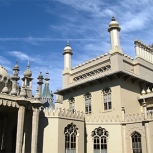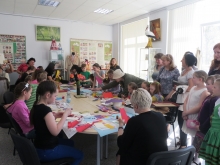
Brighton & Hove
With a population of 273,00, Brighton and Hove is located in southern England on the Channel coast. Originally a small fishing village, Brighton started its transformation when it was discovered in 1750 by Dr Richard Russell, who proclaimed the benefits of his seawater therapy. It soon became known as ‘London-by-the-Sea’, and its popularity increased further when the Prince Regent built his oriental palace, the Royal Pavilion, between 1784 and 1822. Further grand houses were built overlooking the sea in the 18th and 19th centuries especially in Brighton’s sister town of Hove. Their combined importance was acknowledged in 2001 when Brighton & Hove was awarded city status.
Fast rail links into London have made it a popular area for people working in the capital. In terms of local employment, tourism is a key activity, with some 8 million visitors contributing an estimated £400 million to the economy each year. Major attractions include the Royal Pavilion, together with the Brighton Pier, the marina, Sea-life Centre and Promenade. A lively resort, it offers a range of entertainment, with its theatres, restaurants, street cafes and vibrant nightlife. In May the Brighton Festival takes place over a three-week period. With over 700 events, it is the largest international arts festival in England.
Brighton & Hove has 20,000 students are enrolled at the city’s two universities, which contributes to the high number of 20-39 year olds in the city. Brighton & Hove is one of the UK’s major centres for English language learning.
SOME RELATED NETWORKS
Urban N.O.S.E.
Healthy Ageing
News
News from our networks – 5 March 2021
Article




